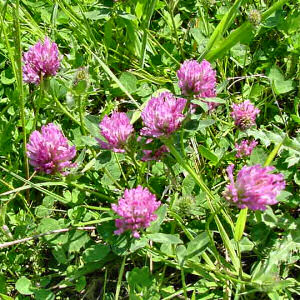To get the right synergy and energetic combination, consider the nature of your symptoms. You can use four general descriptions—hot, cold, wet, and dry—to categorize your illness, and these can be matched to four general effects that herbs have on the body.
You can determine whether an herb is hot, cold, wet, or dry by its taste, smell, touch, and sometimes just by its appearance. For instance, slippery elm, when tasted, will have a slippery feel on your tongue. This means that the herb has a wet characteristic that can be used for dry conditions in the body. The slippery elm, being mucilaginous, is soothing to the body tissues; I use it if I get a dry, scratchy throat from talking too much! An example of the hot category is the herb capsicum, which is the fruit of the cayenne pepper plant. Capsicum is a very hot herb indeed—and one taste on the tip of your tongue will prove it! Another clue that capsicum is hot is its red color. If you are cold and lacking circulation, capsicum would be a great herb to help you generate some heat.
A dry herb in energetics is an herb that causes your tissues to dry up. Most of these herbs are referred to as astringents or sour herbs. A good example is white oak bark, which is used to tighten and dry up swollen tissues and blisters. An example of a cooling (cold) effect from an herb is aloe vera, which is also a mucilaginous herb. This herb has both a cooling and a moistening effect on the body. If you were hot and dry, drinking a little aloe vera in your water would help you cool down and would moisten your tissues.
Try your own taste test with each of these herbs and see for yourself the effect it has on you. Open a capsule of capsicum and dab some on your tongue. It won’t be long before you’ll be reaching for that cooling sip of aloe vera! You will feel the white oak bark tighten your tongue, and you’ll sense the sliminess of the slippery elm when you moisten it. This experiment will really get you in touch with energetics.
 Adults with acne can follow the same herbal advice for teenagers by using burdock root to cleanse the blood. For men or women, red clover (Trifolium pratense) taken internally has been an excellent herb for cleansing the blood and clearing up skin ailments such as acne. You can support the liver (which filters excess hormones from the blood) to get to the source of your problem. Take two to three tablets of either burdock, milk thistle, red clover, or dandelion two to three times daily to help your face clear up.
Adults with acne can follow the same herbal advice for teenagers by using burdock root to cleanse the blood. For men or women, red clover (Trifolium pratense) taken internally has been an excellent herb for cleansing the blood and clearing up skin ailments such as acne. You can support the liver (which filters excess hormones from the blood) to get to the source of your problem. Take two to three tablets of either burdock, milk thistle, red clover, or dandelion two to three times daily to help your face clear up.












